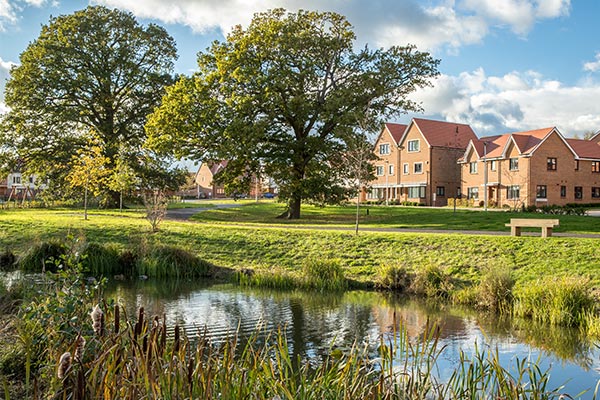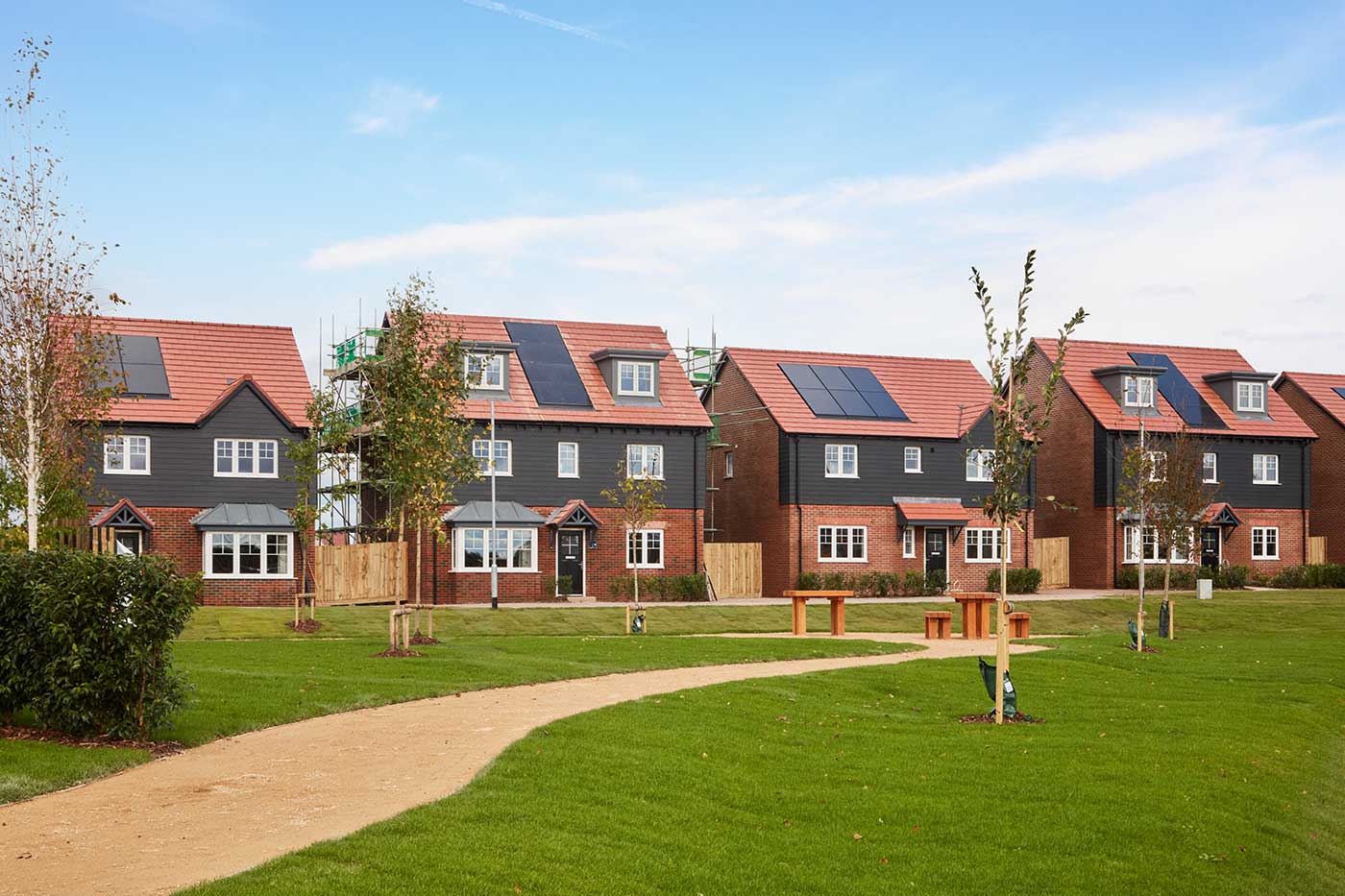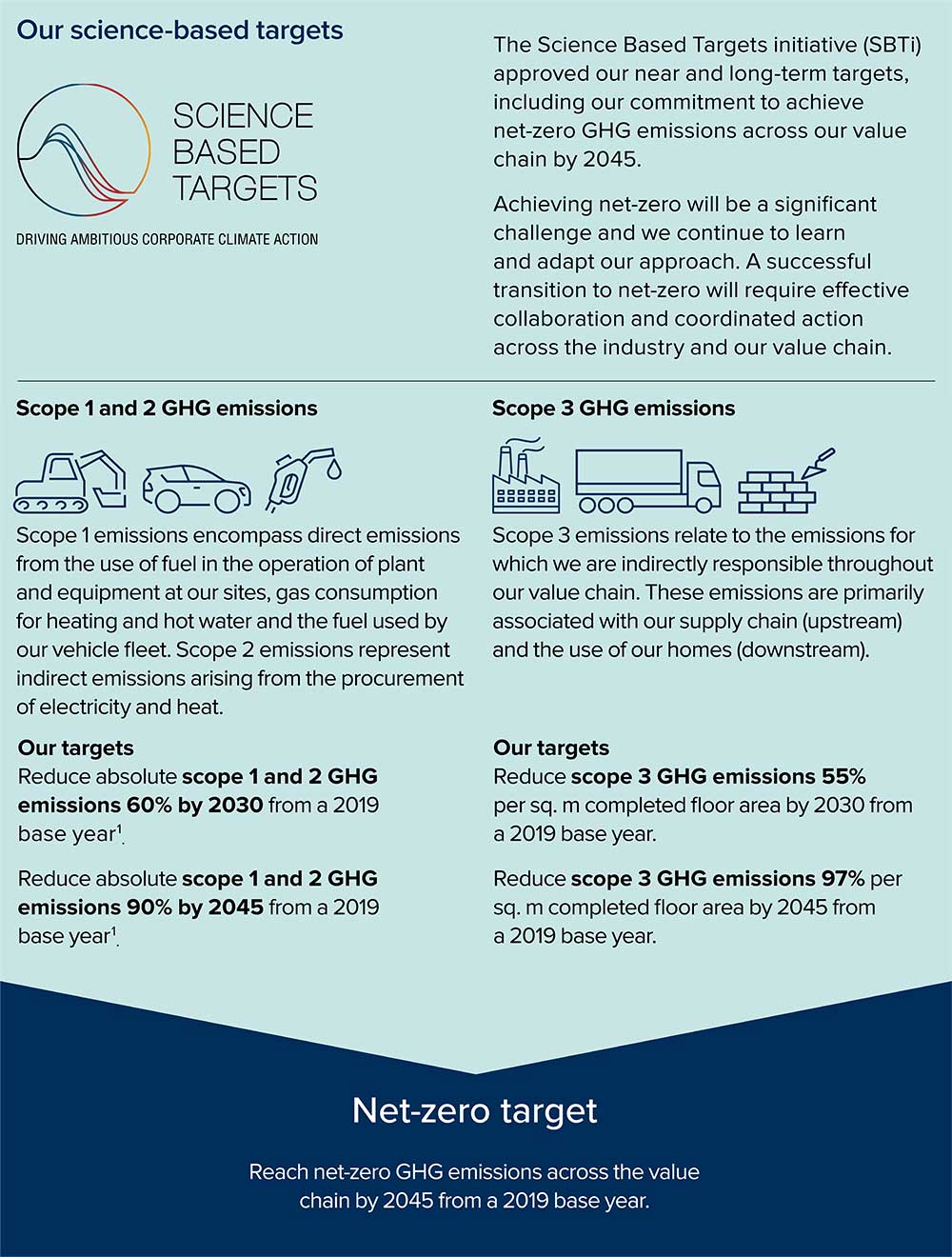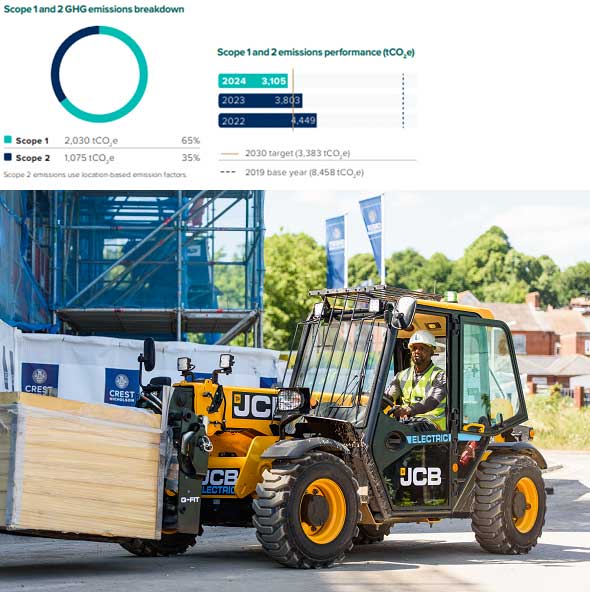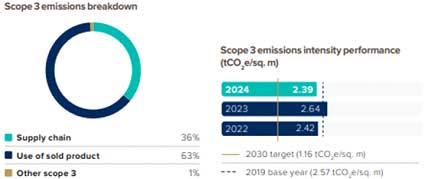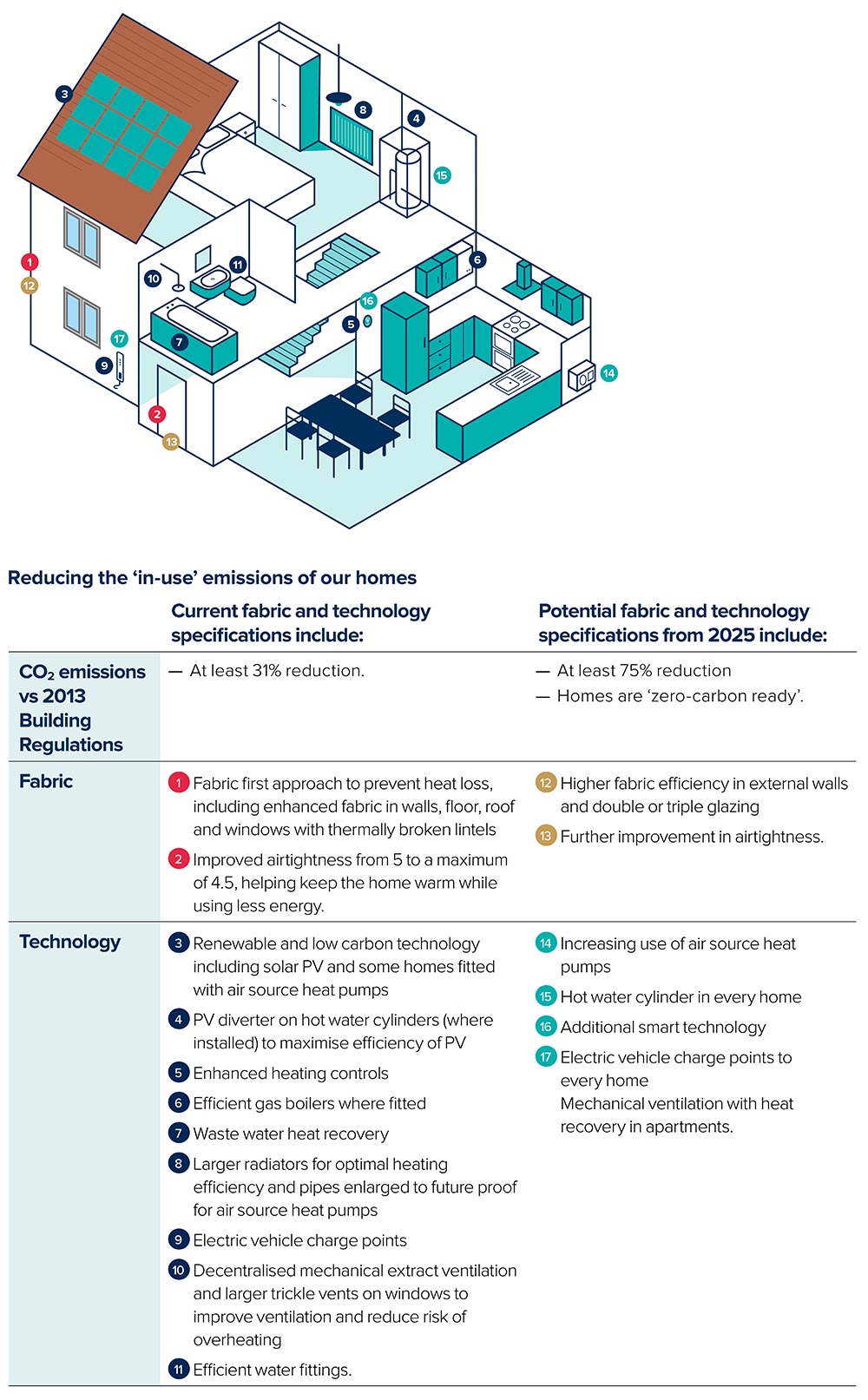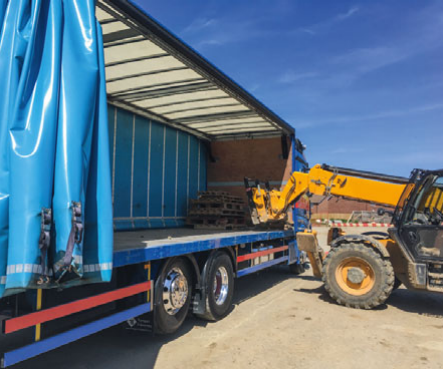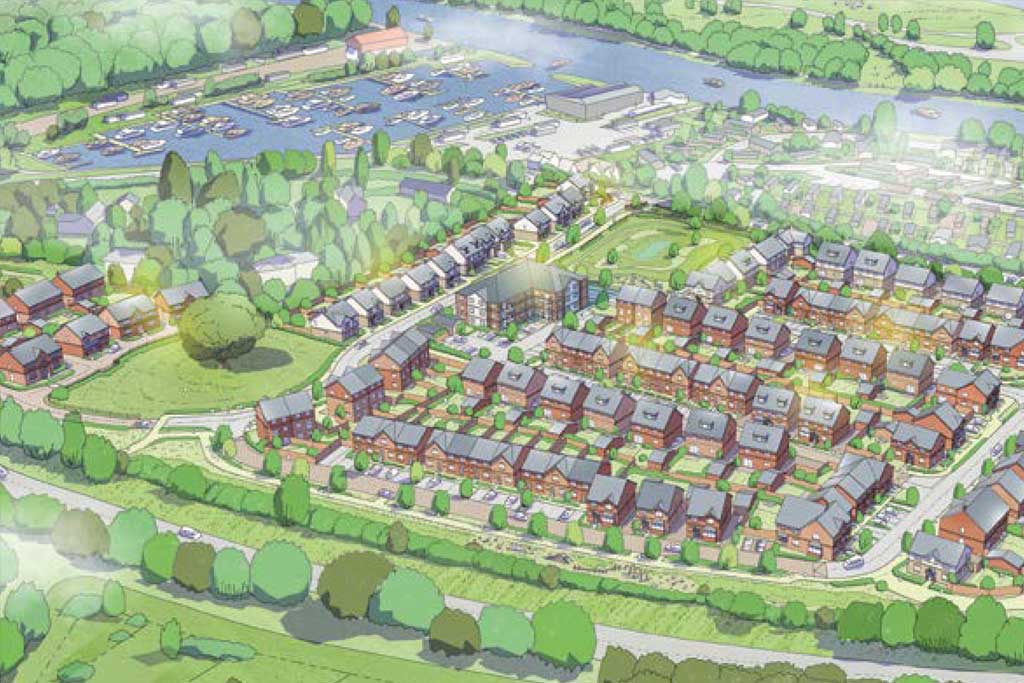Situated near Windsor, the development achieved planning consent in 2023 and will comprise of 135 homes, with 40% designated as affordable housing. Our South division actively engaged with our energy consultants to ensure high levels of fabric efficiency. The homes will incorporate air source heat pumps and apartments will utilise hot water heat pumps and electric panel heaters. GHG emissions will be 76% lower across the development than 2013 Building Regulations, aligning with the Future Homes Standard target. An additional financial contribution into a carbon offset fund will balance the residual emissions.
Our team worked in partnership with our ecologists and landscape architects to ensure that open spaces will provide a haven for wildlife and attractive recreational areas for residents. The development will create a 14% biodiversity net gain through the delivery of a wildflower meadow, an orchard, nature-based sustainable drainage and tree planting. Other features that support nature and the community include:
— Community allotments
— 50 swift bricks
— 50 bat bricks
— 10 bee homes
— Hedgehog highways
— Playground and informal play spaces throughout the development
— Attractive drainage features that are designed for informal recreational space, ecological benefits and water management during high rainfall events.
"In line with our commitment to sustainability, as well as delivering much needed new homes and affordable housing, we aim to make Windsor Gate a sustainable development for future generations."
Nicholas Daruwalla
Land Director, South





